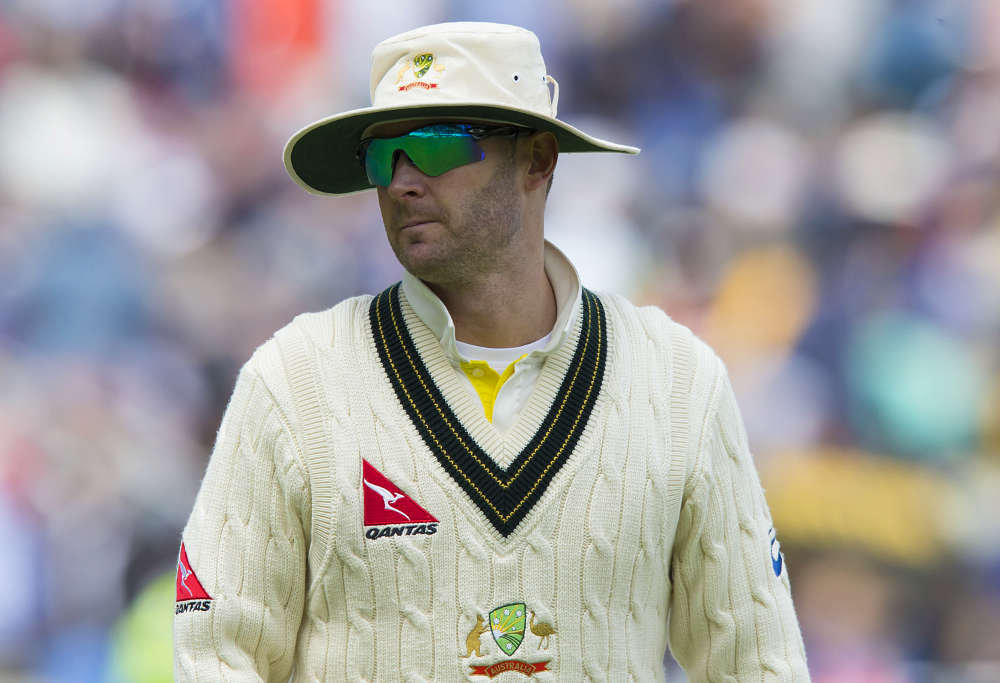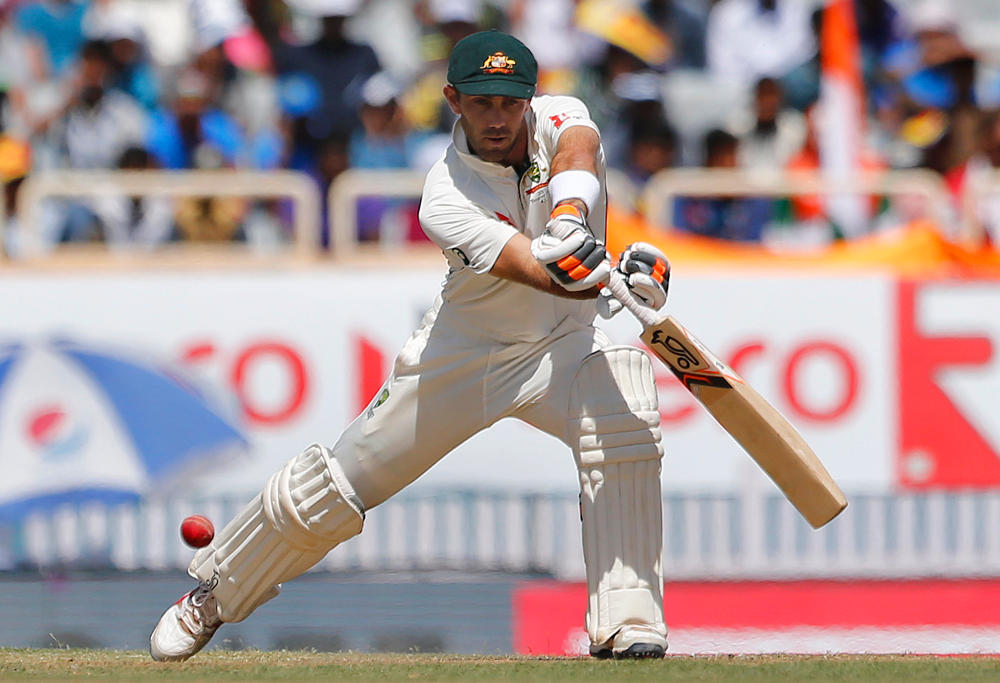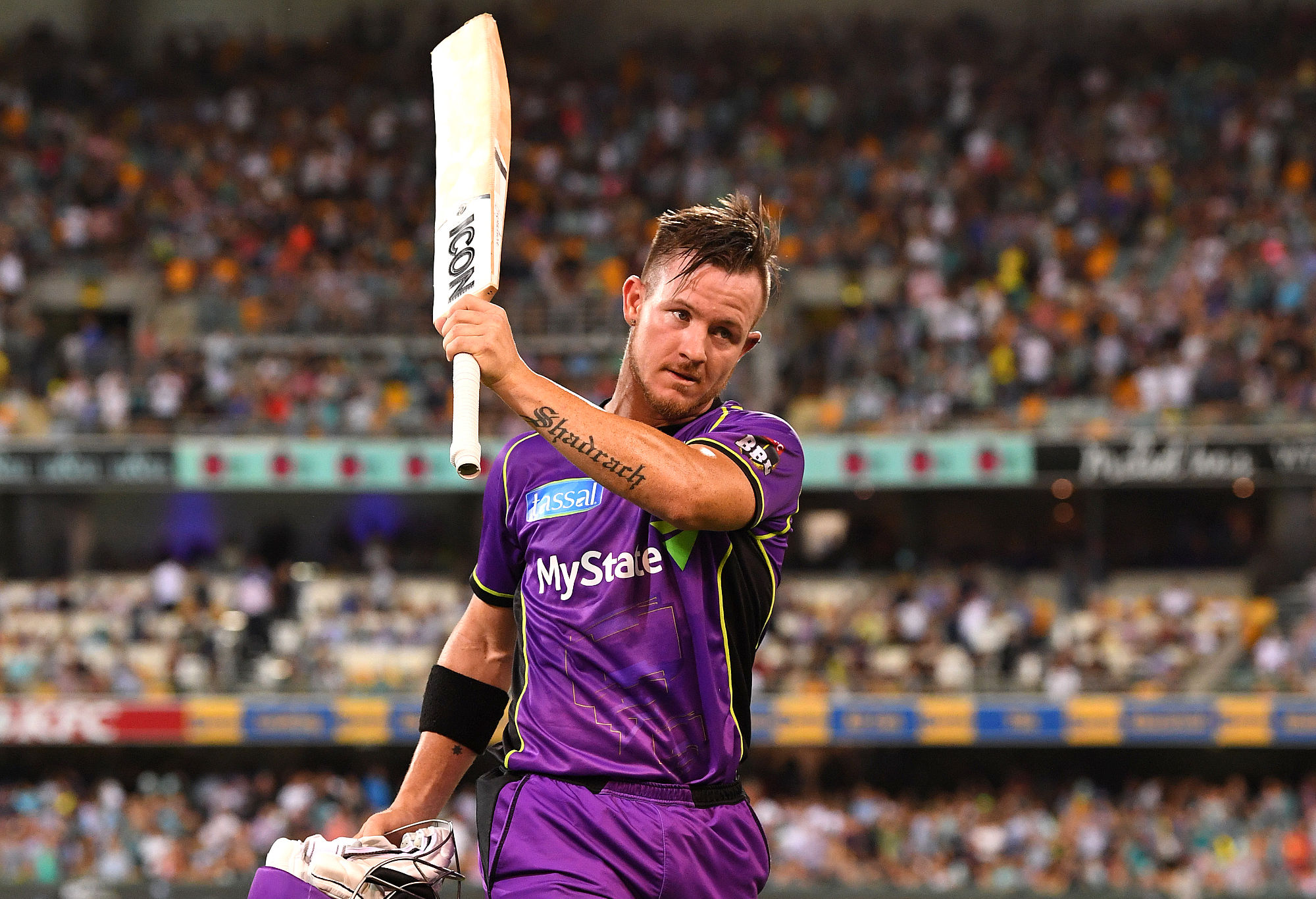World Cup chances up in the air but Smith makes Major call on T20 future, Green dumped despite huge IPL deal
Test great Steve Smith is to play for Washington Freedom in the second season of Major League Cricket as the Australian influence in the…
January 2010, and Australia’s first Test of the decade is against Pakistan. They’re dismissed for 127 in the first innings and Pakistan put on 333.
But Australia rally to score 381 (Shane Watson 97, Michael Hussey 138) and dismiss Pakistan for 139 led by Nathan Hauritz’s 5-53.
Remember those days? When Watto opened and Hauritz was our spinner? Look at the rest of the team – Phil Hughes, Ricky Ponting, Michael Clarke, Marcus North, Brad Haddin, Mitchel Johnson, Peter Siddle, Doug Bollinger.
It seems like a long time ago now – pretty much all of them have retired, except Siddle and Watto in T20s. Hughes, tragically, is dead.
I look at that team and go, “That wasn’t a bad side. The batting was better than what we have now. It should have done better than it did”.
Yet by the next summer, Australia had lost the Ashes 3-1 leading to Ponting retiring as captain, the Argus review and the reign of Pat Howard.
And so the 2010s was launched.
The decade is almost over. With weird symmetry, Pakistan are the touring team again this summer – and it’s time to reflect on Australian cricket in the 2010s.
It wasn’t a golden period like the ’90s and most of the ’00s; it wasn’t bad, like most of the ’80s; it wasn’t as traumatic as the ’70s or dull as the ’60s.
What was it, then?
We had a patchy side to start… and we’ve wound up with a patchy side.
(I’m talking men’s cricket here – not the women, who’ve generally put our blokes to shame for the whole decade, whether it’s in terms of performance or behaviour.)
Where did we go wrong in the 2010s? And where did we go right?
I feel there were ten distinguishing characteristics.
1) Rebuilding
The theme of Australian cricket in the 2010s was rebuilding.
After the 2010-11 Ashes, there was rebuilding. After Mickey Arthur was sacked in 2013 there was rebuilding.
Then after Phil Hughes died. Then after Michael Clarke and a bunch of others retired around 2015.

(AP Photo/Jon Super)
Then after we lost five Tests in a row in 2016. Then after sandpaper-gate.
After a decade and yep, we’re still rebuilding.
“This is a new team. It needs time.” We heard that a lot in the 2010s.
People do give new teams more time. I sometimes wonder if that explains selection decisions – to keep teams fresh and new, so the selectors have an excuse for their failure.
And there was a lot of failure in the 2010s. But there was also a lot of people “making their mark”.
When Greg Chappell came in as selector in 2010-11 and 2016-17, he wanted to make his mark – the axe fell brutally.
Michael Clarke wanted to make his mark after becoming captain in 2011. So did Darren Lehmann when he became coach in 2013. And Justin Langer when he became coach in 2019.
Rebuilding and mark-making. That’s 2010s Australian men’s cricket in a nutshell.
After all of this, we’ve wound up where we started.
2) Thrashed overseas, mostly
Australia’s overseas record went back to being as dire as it was in the 1980s. They lost series in England in 2013 and 2015 and only drew in 2019.
They lost series in India in 2010, 2013 (4-0) and 2017, blowing a great chance to win in 2017.
They were hammered by Pakistan in the UAE in 2014 and 2018, and drew with them in England in 2010 (remember that series?).
They drew with Bangladesh in Bangladesh in 2017. Of course, they did beat the West Indies in the West Indies, as if anyone cares now. Sometimes the games were quite tight.
They held the line in the southern hemisphere, beating New Zealand and South Africa in their own backyards… until they lost 3-1 to the Saffas during the sandpaper-gate tour.
They failed to win an overseas World Cup (after winning two in the 2000s) – knocked out in the quarters in 2011 and the semis in 2019.
They won a 2011 series 1-0 against Sri Lanka in Sri Lanka but lost 3-0 in 2016.
A possible explanation for these defeats: on many of the tours for some reason the selectors thought the secret to success was playing five batsmen and an all-rounder (Moises Henriques! Mitch Marsh! Watto!).
It’s a method that failed in India 2013 and 2017, England in 2013 and 2015 and the last Test of 2019, South Africa in 2018, Sri Lanka in 2016, and the UAE in 2014 and 2018.
But, you know, keep trying guys.
3) Victory at home, mostly
There were some absolute triumphs at home.
Ashes thumpings 5-0 in 2013-14 and 4-0 in 2017-18. The ODI World Cup in 2015.
Consistent victories over West Indies, Sri Lanka, Pakistan and New Zealand.
There were some stumbles.
South Africa beat us at home in 2012 and 2016. And England in 2010-11.
And, last summer, India. (Yes, Australia was missing two of its best players, but seriously is that all it takes? To lose two?)
Australia is not the fortress it was in the 2000s.
But, you know, #rebuilding.
4) Search for superstars
Jarrod Kimber once wrote an excellent article about Australia’s perennial search for the “ten year player” – a kid who comes in, is blooded early, gets dropped like every man must (“Don Bradman got dropped, so did Ponting, it’ll do ya good, strewth, get a beer up ya, love is love, it wasn’t like this in my day”, etc etc) and comes back a champion.
Australia’s selection policy of the 2010s was dominated by this quest.
Sometimes this worked out well: Michael Clarke, Steve Smith, Dave Warner, Pat Cummins (after a five-year gap) and Josh Hazlewood.

(Photo by Gareth Copley/Getty Images)
Sometimes it was mixed: Michael Clarke as captain, Shane Watson in Tests, Mitchell Johnson (who lost Australia as many Ashes series as he won), Usman Khawaja, Phil Hughes, Steve Smith as captain, Mitchell Starc in Tests and Matthew Wade.
Sometimes it didn’t work at all: Matt Renshaw (after a strong start), Mitch Marsh, Ashton Agar, Sam Heazlett, Billy Stanlake, Marcus Stoinis and Joel Paris.
The jury is still out on Alex Carey and Marnus Labuschagne.
They accidentally discovered a superstar in Nathan Lyon, but ignored that fact for years and are somehow still not convinced.
The current superstars they’ve got crushes on are Will Pucovksi and Riley Meredith. Let’s see how they do on the international stage. Because we’ll get a chance this summer, mark my words.
I mean, Pucovski is dealing with serious depression, but you’ve got to pick fruit when it’s ripe off the tree, right, Greg Chappell? Like with Sam Heazlett.
Thing is, Australia had a lot of success with unsexy non-superstar players like Adam Voges, Chris Rogers, Tim Paine, Joe Burns, Steve O’Keefe and Ryan Harris.
But I can’t see the superstar policy changing in the future.
It’s more exciting to say “let’s get this young bloke in” instead of thinking about how to construct, you know, a winning team.
5) Obsession with a fifth pace bowling option
This obsession started with Andrew Flintoff’s heroics in 2005 and led to the quest of finding an Australian all-rounder which is still going (#protectthequicks).
It caused Andrew Symonds and Shane Watson to be being given countless opportunities that they would sporadically reward, but neither were consistent in the long-term (Watto had two great years with Katich but then they got rid of Katich).
We honestly probably would’ve been better off picking Simon Katich or David Hussey or Brad Hodge as a sixth batsman in that time.
It led to things like Moises Henriques’ Test career, Glenn Maxwell being picked as a spinner, and the 32 Tests (so far) of Mitch Marsh.
The thing is, Australia keep finding batsmen who were handy fifth bowing options, but because they were spinners it didn’t seem to count. Katich, Marcus North, Glenn Maxwell and Marnus Labuschagne were key victims of this (North and Katich won Tests for Australia with the ball).
Here’s how far Australia haven’t come. They retained the Ashes with six batsmen over four Tests in 2019, then snapped and went back to five and an all-rounder for the fifth Test like the junkies they are.
Gotta protect the quicks. Seems more important than winning, this decade (See the section titled “thrashed overseas”).
6) The blacklist
A selector’s blacklist isn’t a new thing. Just ask Clarrie Grimmett about the 1938 Ashes (apart from him being, well, dead).
It seemed particularly pronounced throughout the 2010s though, because Australia’s form was so erratic, especially overseas, it made you wonder why so many talented players didn’t get picked.
The blacklist poster boy is Steve O’Keefe whose omission on the 2013 Indian tour is particularly bewildering.
You can’t justify it on form or numbers so it’s got to be “other reasons”.
Simon Katich got on this list.
So did Glenn Maxwell, Joe Burns, David Hussey, Brad Hodge, Andrew MacDonald, Chris Hartley and Cameron White.
Sometimes these players were the recipient of hype – they couldn’t get enough of Maxwell in 2013 – then something happened.

(AP Photo/Aijaz Rahi)
To be fair, sometimes you could get off the blacklist by amazing domestic performances. But they had to be extraordinary players who, in turn, had to do more than a Chosen One.
A lot of this was of course due to Greg Chappell. A man very big on picking fruit when it’s ripe and getting rid of old people unless they’re selectors, coaches, commentators or administrators.
But he wasn’t the only one guilty of blacklisting in Australian cricket. Not by a long shot.
My Blacklisted XI
Joe Burns
Simon Katich
Cameron White
David Hussey
Glenn Maxwell
Andrew McDonald
Chris Hartley (w)
Steve O’Keefe
Trent Copeland
Chadd Sayers
Jackson Bird
Ignoring career first-class averages was one of the biggest problems of Australian cricket in the 2010s.
7) Pace, pace, pace and more pace
In its heart of hearts Australian cricket thinks it’s all about pace, pace, pace and even more pace. After all, it worked in the late 1940s with fast bowlers Ray Lindwall and Keith Miller, and in the mid-70s with Dennis Lillee and Jeff Thompson.
“Grrrr. Me bowl fast. Me tough. Grrr.”
By the late ’80s, the constant pummeling of our pace attacks saw Australian selectors realise, “hmmm maybe pace doesn’t always work”. Following that, we had a generation of success built on medium pacers (Alderman, McGrath) and spinners (Warne, McGill).
But, a leopard can’t change its spots. The 2010s saw the return of the pace, pace, pace and more pace lobby.
Sometimes it worked brilliantly. The 2013-14 Ashes and the 2015 World Cup, for example.
Often it didn’t. The obsession with fast bowling was useless in England, the UAE, Sri Lanka and India.
Bowlers like Steve O’Keefe, Chadd Sayers, Jackson Bird, Joe Mennie and Trent Copeland might have had an impact instead of the overused speed gun.
Look I get the theory. “You see, on pitches that don’t do much you gotta have pace.”
But the thing is, that never seems to work outside Australia and South Africa.
Glenn McGrath would not have been picked this decade. And I think Stuart Magill would’ve struggled too.
The selection of Peter Siddle in 2019 showed was encouraging, but let’s see how long that lasts.
“Look at the speed gun, mum! Look at it bounce! Weeee! Pace! ”
8) Old men trying to hang on to power
This is a problem as old as time itself but seemed particularly prevalent in Australian cricket of the 2010s.
I’m not talking about people on the field. The importance of playing form generally seems to ensure no one really stays beyond their use-by date, unless you’re Mitch Marsh.
(Aside: we don’t hate you Mitch, that’s misleading. We hate the outrageous favouritism that’s been shown to you. But I will acknowledge you are perhaps the greatest office politician in the Australian cricket team. And you bowled extremely well in the fifth Test in the Ashes.)
The reigns of Pat Howard and David Peever were littered with disasters and it took near mutinies to get rid of them. James Sutherland left his post after 17 years.
Kevin Roberts led the charge for the pointless, destructive pay dispute which failed miserably – and earned him a promotion.
Trevor Hohns and Greg Chappell selected teams in formats they had no experience playing in, more than two decades since they retired. They contributed to numerous Test disasters and still held on to their jobs (Chappell resigned at a time of his own choosing, remember, he wasn’t sacked, and Hohns is still there).
The Channel Nine commentary team who were so reviled that no one felt sad when Nine lost the TV rights have somehow all found a way to keep commentating. Even Michael Slater. Even Mark Taylor. Even Michael Clarke.
In an era where there’s immense pressure to keep the game modern and relevant, there has never been more old men hanging on to their jobs for dear life.
And another thing. The lack of support by these former players for the current players during the pay dispute was revolting.
9) T20
T20 has greatly changed world cricket. You can now be better-off financially (and probably mentally) touring the world playing domestic T20 cricket leagues than representing your country.
This actually isn’t a new threat. In the past players have been enticed away from international cricket by big money from county and league cricket, as well as South African rebel tours (in the early 1930s Don Bradman almost quit cricket in Australia to play in the English leagues).
But T20 leagues have disrupted Australia’s summer greatly – more than ODIs ever did.
I actually enjoy the Big Bash and don’t mind it playing at the same time as Test matches.
Sometimes after a really dull day’s play in a Test, it’s nice to rinse out the bad taste with a T20 game. The comp needs tweaking but it’s a tough to schedule to keep everyone happy. I do feel for the organisers.
But I wish they’d play more first-class cricket other than Tests during the Big Bash window. Like, say, a trial game. It would help selectors.
But I do remember a decade ago cricket was worried about football’s A-League stealing summer from them. The Big Bash stopped that. And it’s introducing new fans to the game. Free entry to kids under 12 is a masterstroke.
This is all good stuff.

(AAP Image/Dave Hunt)
10) Fan Podcasts
This is one of the nicest things about cricket in the 2010s. Cricket fans can just make their own podcasts. If they’re any good, they’ll pick up an audience.
And there’s some superb ones out there. The Final Word, Cricket Unfiltered, The Grade Cricketer, and Caught Behind Podcast.
They’ve helped liberate Australian cricket media from the tiresome grip of the career journalist and the bloated, blah blah blah ex-player.
Their work tends to be not only more enthusiastic than establishment media but also more insightful, independent and accurate.
This is extremely positive.
Conclusion
So the 2010s – a mixture of good and bad.
The fast bowling stocks have always been strong but the selectors have been seduced by pace, which was often costly to the team.
Nathan Lyon ensured the spinning department was decent but it could have been much better if they’d given him and Steve O’Keefe more support (Lyon was dropped twice), and picked a better keeper than Matt Wade.
The batting has been extremely patchy. Strong in the southern hemisphere, not so good elsewhere. It’s been propped up by Dave Warner and Steve Smith but was needlessly weakened by so-so all-rounders at six, and ignoring players with consistent first-class records like Simon Katich, Glen Maxwell, David Hussey and Brad Hodge.
Australia was constantly a second-tier team through the 2010s. They had their moments, but could never keep up the consistency.
Unfortunately a lot of that was self-inflicted.
Here’s hoping things get better in the 2020s.
Still, it was entertaining to watch.